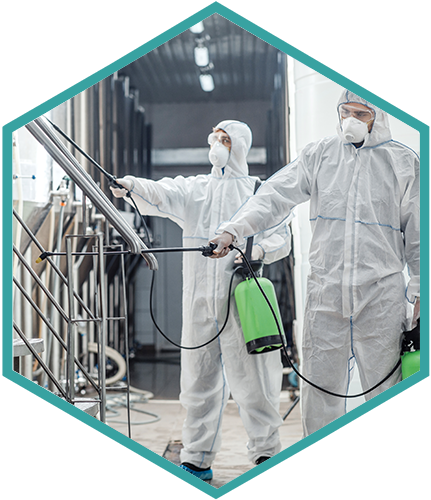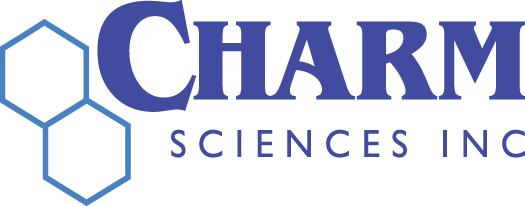Productos / Pruebas y Kits / Pruebas de
Pruebas de saneamiento/higiene (ATP)
 El saneamiento y la higiene son esenciales para la seguridad alimentaria, la atención sanitaria, la hostelería y otras industrias. En las instalaciones de procesamiento de alimentos, las sustancias microscópicas no deseadas pueden alterar el aspecto, el sabor y la seguridad de los alimentos. Del mismo modo, en los centros sanitarios, los microorganismos no deseados presentes en las habitaciones de los pacientes o en los equipos quirúrgicos pueden propagar infecciones.
El saneamiento y la higiene son esenciales para la seguridad alimentaria, la atención sanitaria, la hostelería y otras industrias. En las instalaciones de procesamiento de alimentos, las sustancias microscópicas no deseadas pueden alterar el aspecto, el sabor y la seguridad de los alimentos. Del mismo modo, en los centros sanitarios, los microorganismos no deseados presentes en las habitaciones de los pacientes o en los equipos quirúrgicos pueden propagar infecciones.
Charm Sciences ofrece pruebas de ATP que permiten a los clientes comprobar la limpieza a nivel microscópico de forma rápida, rentable y objetiva. Estas pruebas se realizan en segundos y permiten una corrección inmediata en caso necesario.
Beneficios
-
-
- Resultados rápidos en sólo 5 segundos.
- Sensibilidad superior con la tecnología novaLUM II-X.
- Verificación de superficies húmedas y secas.
- Integrated data management software to track, trace, and trend results.
-
-
-
- Torundas estables a temperatura ambiente hasta 12 meses.
- Componentes reciclables para reducir los residuos.
-
PRODUCTOS INCLUYEN:
PocketSwab Plus ATP Swab (Verificación de higiene de superficies)
El hisopo rápido PocketSwab Plus ATP (trifosfato de adenosina) es una prueba autónoma, estable a temperatura ambiente y de un solo servicio que permite la verificación total de la higiene de las superficies en sólo 5 segundos, lo que permite tomar medidas correctivas en tiempo real. El PocketSwab Plus ATP swab se utiliza para la verificación de la limpieza y la validación de las prácticas de saneamiento e higiene para ayudar a prevenir la contaminación cruzada y los problemas microbianos debidos a procedimientos de saneamiento ineficaces. Los datos se recopilan, rastrean y analizan para la documentación HACCP y las auditorías de seguridad alimentaria.
WaterGiene ATP Swab (Verificación del saneamiento del agua)
El WaterGiene ATP swab se utiliza para comprobar la salubridad del agua, incluida el agua CIP, las aguas de enjuague y el agua de refrigeración. El WaterGiene swab mide la limpieza del agua en 20 segundos midiendo el ATP total. Los niveles altos de ATP indican la presencia de microorganismos, alimentos y otros elementos biológicos en el agua.
AllerGiene ATP Swab (Control de alérgenos)
El AllerGiene ATP swab es una prueba de control de alérgenos basada en ATP y diseñada para evitar el contacto cruzado de suciedad alimentaria alergénica en equipos de proceso. Mide el ATP (trifosfato de adenosina) a niveles bajos como indicador de la presencia de alimentos en superficies limpiadas en húmedo o aguas de aclarado. El AllerGiene swab es una prueba sencilla de 20 segundos con una sensibilidad suficientemente alta para detectar residuos de alimentos alergénicos. El hisopo alcanza detecciones comparables a las de los métodos específicos para alérgenos: de 0,1 a 25 ppm para la mayoría de los ocho grupos de alimentos alergénicos: mantequilla de cacahuete, trigo, soja, crustáceos (gambas), leche, frutos secos, huevo y sésamo.
FieldSwab ATP Swab (Control del saneamiento en exteriores)
El FieldSwab ATP swab permite aplicar programas de seguridad alimentaria al aire libre. Al igual que el PocketSwab Plus ATP swab, la FieldSwab test detecta rápidamente el ATP (adenosín trifosfato) como medida de la limpieza de las superficies. Esto se hace midiendo las unidades de luz producidas cuando el ATP reacciona con la luciferina/luciferasa. La FieldSwab test tiene una cubierta que bloquea la luz para evitar interferencias de la luz diurna y utiliza un canal especialmente calibrado en el novaLUM II-X system.
novaLUM II-X System (luminómetro)
El novaLUM II-X system es un luminómetro del tamaño de la palma de la mano que ofrece una ciencia superior para un control sanitario avanzado. Utiliza un tubo fotomultiplicador (PMT) tecnológicamente avanzado que amplifica el ATP (adenosín trifosfato) permitiendo la detección de niveles más bajos de contaminación microbiana y orgánica.

Industrias
¿Por qué elegir las pruebas y los equipos ATP de Charm?
Charm Sciences ofrece un sistema de control higiénico de ATP líder en el sector que destaca por encima del resto en cuanto al impacto de la temperatura y el tiempo en la repetibilidad y precisión de los resultados de las pruebas. Obtenemos validaciones colaborando estrechamente con las agencias reguladoras y nos hemos ganado reputación como proveedor de diagnósticos de elección en todo el mundo.
Ofrecemos un sistema de control de ATP de alta sensibilidad para ayudar a los fabricantes e inspectores de diversas industrias a determinar el nivel de limpieza de los productos. Nuestro sistema combina tres componentes esenciales -el diseño del dispositivo de prueba, la química de bioluminiscencia y el luminómetro- para superar al resto.
Ofrecemos fotomultiplicadores (PMT) de última generación especificados a medida para la detección de ATP. Estos dispositivos son más sensibles a la luz que otros dispositivos, concretamente los fotodiodos. Dado que el nivel mínimo de luz detectable es mucho menor en los PMT que en otros instrumentos, son más adecuados para detectar ATP.
Contacto de ventas
¿Tiene alguna pregunta sobre ventas? Envíenos un mensaje y un representante de ventas se pondrá en contacto con usted.
By submitting your information via this form, you give Charm Sciences permission to contact you via email about updates, news, or offers that may interest you. It is Charm Sciences’ policy not to share any personally-identifying material obtained through our websites with any third party.
